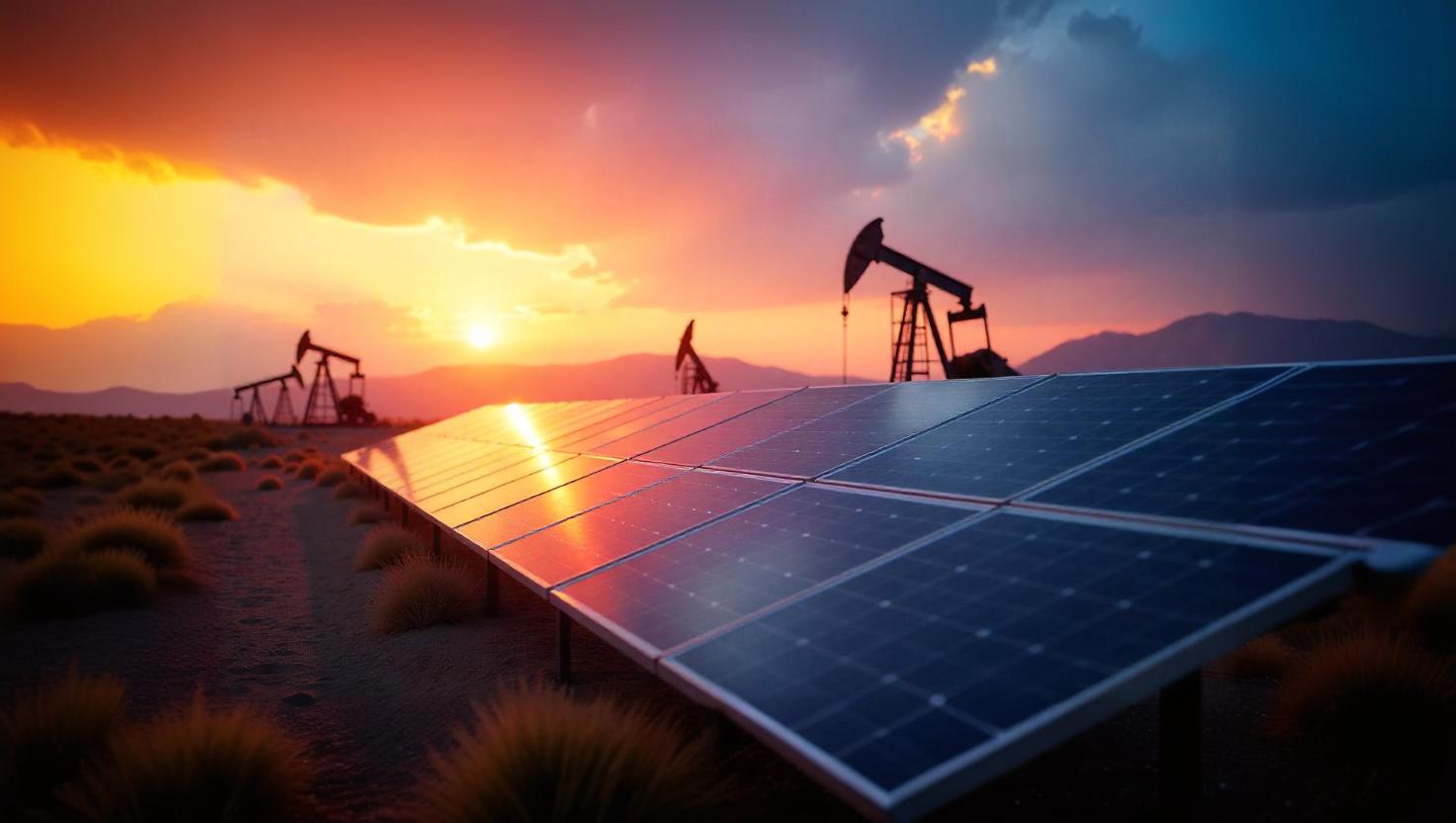Energy powers homes, industries, transportation, and economies worldwide, so it’s no surprise that there are a lot of strongly held opinions—especially when it comes to renewable energy vs fossil fuels—which only increase when energy careers are part of the debate.
The global energy debate is about choosing a power source that will reduce the stress on the planet but be economically viable in the long term.
Energy researchers examine how the energy industry drives climate change, track advances in green energy, and evaluate impacts on long-term energy security and markets.
These topics have gained importance as fossil fuel reserves decline and geopolitical conflicts and price volatility persist.
This debate comes down to renewable energy vs fossil fuels, but it isn’t just a simple choice.
There are several different criteria to consider, and this article gives a general overview of common issues for fossil fuels and renewables that should be considered when asking yourself which source is best.
As countries, businesses, and individuals navigate this paradigm and transition from finite fossil fuels to renewable energy sources, being aware of both sources’ opportunities and challenges is more important than ever.
1. The Core Differences: Renewable vs Fossil Fuels
The core difference between fossil fuels and renewable energy is where their energy source originates, how they create energy, and whether or not they are renewable.
Fossil Fuels
An energy source made of hydrocarbons that have been formed in the Earth’s crust from decaying prehistoric organic material. The decaying matter is finite; they’re gone once the reserves are used.
The earliest known fossil fuel deposits date back as far as 300 million years ago. Peat and lignit,e or soft coal, began forming around 5 million years ago.
- How they work: Fossil fuels are burned to produce electricity and heat or used directly as fuel.
- Examples: The most common fossil fuels are petroleum (oil), coal, and natural gas.
Renewables:
A natural source of energy that can be used and then renewed rather than depleted.
- How they work: Natural processes such as solar energy to generate electricity, wind to turn turbines, or water flow to spin turbines are harnessed.
- Examples: water (hydroelectric), wind, biomass, or sunlight (solar).
2. Environmental Impact: The Climate Imperative
The overconsumption of fossil fuels has been linked as a major contributor to greenhouse gases, air pollution, and ocean acidification. These gases are also the leading cause of global warming and climate change.
This is because as fossil fuels burn, they release carbon dioxide which is the main greenhouse gas. As these gases accumulate in the atmosphere, they trap heat, leading to surface temperatures increasing.
In the last 30 years, temperatures have risen to the warmest since records began in 1880.
Renewables, however, have low to zero emissions when they release energy, reducing environmental footprint
Resource Depletion and Sustainability
Only renewable energy is a sustainable source even if it has problems with methods to harness it. As a finite energy source, fossil fuels will eventually deplete as the organic matter is removed from the Earth and estimates for when that will happen range from between 50 to 120 years.
In addition to running out, fossil fuel extraction and use are not without consequences.
Coal mining and oil drilling lead to habitat destruction (deforestation) and land degradation. Offshore drilling can lead to oil spills, which devastate ecosystems.
Once the fossil fuels are burned, air pollution from fossil fuels causes smog and negatively impacts human health and plant growth.
In contrast, renewables are a natural source that replenishes with use and have a seemingly infinite supply, provided they are not used faster than they can be regenerated. The challenge with renewable energy is in resource-intensive manufacturing.
The production of renewable energy infrastructure, like wind turbines and solar panels, requires large quantities of materials (steel, copper, aluminum, glass) and rare earth minerals that can deplete Earth’s resources.
Then, manufacturing and transportation take a lot of energy and produce waste, which must be managed responsibly. Using energy to create the items needed for renewable energy could offset some of the environmental benefits.
Climate Change Impact
Around the world there are symptoms of a global warming event. The Arctic and Antarctic ice has started melting and is leading to rising sea levels. This is impacting settlements, agriculture, and fishing.
Scientific models predict the Earth will warm between 2 and 6 degrees Celsius in the next century. Previously, past global warming events took 5,000 years for a 5-degree increase, whereas current projections suggest it could happen in just 100 years.
Climate change poses a risk to renewable energy resources:
- Impacting both supply and demand through extreme weather events
- Altered rainfall patterns
- Rising temperatures which impact the efficiency of solar panels and wind turbines
- Availability of water for hydropower
The use of fossil fuels now could impact the ability to use renewable energy in the future after fossil fuel reserves are depleted.
3. Economic Factors: Cost, Jobs, and Market Trends
When it comes to economic factors, fossil fuels currently have fewer costs than renewable energy. Traditional oil and gas have infrastructures already in place and supply about 80% of the world’s energy needs.
As of 2022, renewable energy sources accounted for 29.1% of electricity generation globally in 2022. The other 70.9% corresponded to fossil fuels, nuclear energy, and other non-renewables.
Cost Efficiency and Investment Trends
Historically, fossil fuels have been cheaper, but prices can surge and plummet seemingly without warning. Thanks to being used for so long, the infrastructure favors fossil fuels and lowers costs.
Renewables have a higher upfront cost, but prices are becoming more affordable thanks to tech advancements, which produce cheaper manufacturing methods and longer durability.
Job Creation & Economic Growth
The energy industry is growing with fossil fuels still a major employer. Oil and gas careers are steady, with some signs of decline as more companies begin to switch (either partially or completely) to renewable energy.
Renewable energy is the fastest-growing job sector globally.
In 2023, the renewable energy sector saw the largest-ever increase in jobs, reaching 16.2 million globally. That’s an 18% year-on-year increase from 13.7 million in 2022.
4. Energy Reliability: Can Renewables Replace Fossil fuels?
Grid Stability and Storage Solutions
When the question of whether or not renewables can replace fossil fuels is asked, stability is usually a big sticking point.
- Fossil fuels provide consistent and stable energy output that can be switched on and off as necessary, regardless of the weather or water levels.
- Renewables have intermittency challenges but are improving with the advancement of grid stability and storage technology like better batteries and smart grids to allow energy to be stored when plentiful and used when demand is high.
Infrastructure and Transition Challenges
Fossil fuel infrastructure is well-established while transitioning to renewables requires major grid upgrades and storage capacity improvements.
Regulations, like existing energy grids currently favor fossil fuel power plants. Many countries are examining their policies and updating them to facilitate the adoption of new technologies.
Transitioning from fossil fuels to renewable energy will require upfront costs but the reduced operating costs of renewables can offset it.
5. Global Energy Policies and Future Outlook
The United States has historically been one of the world’s largest consumers of fossil fuels. Up to 79% of its energy consumption is petroleum, natural gas, and coal.
However, there has been a more substantial shift toward cleaner energy thanks to government policies and incentives, with renewables making up about 13% of the country’s total energy consumption.
Government Policies and Incentives
Federal and state-level policies have included tax credits, subsidies, and mandates to encourage renewable energy adoption. These include programs:
- Investment Tax Credit (ITC) for solar energy.
- Production Tax Credit (PTC) for wind energy.
- Residential Clean Energy Credit for installation of clean energy on your property
- Options for consumers to choose to purchase electricity that has been generated with renewable energy.
These incentives focus on offsetting the costs of using renewable energy, which should help to lower the high initial cost of renewables and put it more on par with other energy options.
Rise of Green Technology
It has been predicted that the future of global energy will grow by a third by 2035. Yet today, more than 1.2 billion people worldwide lack access to electricity.
That number will increase as the global population will reach 9 billion within the next 50 years, increasing energy demand.
This increase has led fossil fuel companies to argue that even when renewable energy is viable as a primary source of electricity, fossil fuels will still be necessary to meet demand.
However, green technology is creating innovations every day. The rise of green hydrogen, nuclear fusion, and hybrid energy models creates circumstances where just renewable or fossil fuels are necessary.
Conclusion: The Way Forward
With the population growing and industrial development rising, the demand for finite energy sources like oil and gas is at an all-time high.
The transition from fossil fuels to renewables is necessary, but it will take time, and pitting them against each other perhaps isn’t the answer. Rather than renewable energy vs fossil fuels, people should examine both options.
A balanced approach that includes renewable energy investment, improved storage solutions, and policy changes are crucial for the future.
Fossil fuels have dominated the past, and today, they are still necessary, but renewables are shaping the future.
If you’re curious about a career in renewable energy or oil and gas, read up on some of the roles in the industry.










